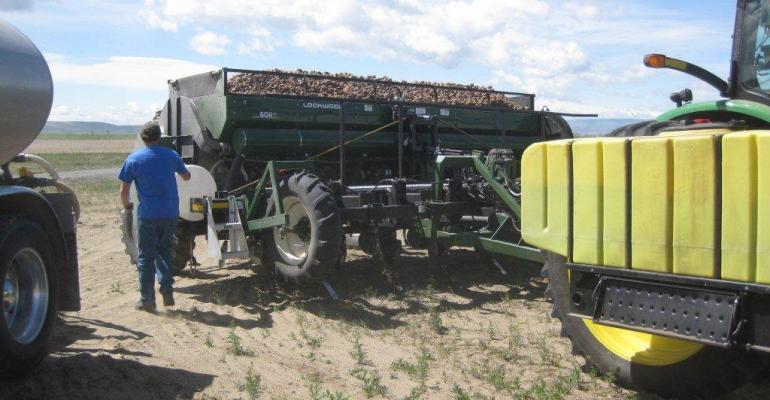LONDON – The global automotive industry is facing ever-higher demands to improve performance and quality at lower cost and high-tech coatings may enable the industry to deliver.
The need for energy efficiency and energy reduction were two key messages that emerged from the United Nations climate-change agreement reached in December in Paris. The auto industry may face legal obligations under rules emerging from the agreement struck by the 21st Conference of the Parties to the UN Framework Convention on Climate Change.
One of the key innovations for automakers is the use of coatings that control friction. This results in equipment breaking down less often, running more efficiently and using less fuel. An example of this is the Vulcan Grip system developed by U.S.-based Extreme Industrial Coatings.
Vulcan Grip is a factory-applied, super-hard ceramic-metal composite high-traction surface coating for pulleys. This high-velocity thermal spray coating reduces pulley wear on belt-driven systems to near zero, according to the company.
The technology will prove useful to industries facing pressures to reduce energy and fossil fuel emissions, according to Jon Osborne, president of Extreme Industrial Coatings, who notes the technology could be adopted by the auto industry.
“Production efficiency, economies of scale are everything,” he tells WardsAuto. “By eliminating slippage, all your power is transmitted downstream; your productivity, your efficiency go up. At the same time, the fuel that went into belt slippage is being more usefully deployed; your fuel efficiency goes up. There are cascading effects of eliminating slippage.”
In particular, Vulcan Grip technology will enable superchargers, which compress air driven by high-performance autos, to dramatically improve performance. All-terrain vehicles will benefit, he adds. “ATVs, snowmobiles are belt-driven – they will all benefit. Vulcan Grip is another tool to play with to adjust the coefficient of the friction in the system.”
Powder coatings are another potentially important coatings solution. The key, says Kevin Biller, spokesperson for U.S.-based Powder Coating Research Group (www.powdercoatingresearch.com) is that powder-coatings companies must meet the energy-efficiency designs in which manufacturers are investing.
“The big manufacturers are making trucks, cars, farming equipment that are more efficient by design,” he says. “They are moving from metallic substrates – sheet metal – to plastic composites. The energy efficiency comes from the lighter weight. The products are still driven by fossil fuels.
“Interesting new cure chemistry and fine-tuned heating processes are evolving to meet the challenges posed by these non-traditional substrates,” Biller says. These chemistries span the polymer spectrum from epoxies for tough, highly chemical-resistant coatings for non-ultra- violet exposed surfaces to outdoor durable polyesters for automotive grade-acrylics.
“We are making the finishing process more efficient by developing lower temperature materials," he says. These include polymers such as acrylonitrile butadiene styrene, polycarbonate/acrylonitrile butadiene styrene and polyolefins. These polymers can be cured without the substrate exceeding 230˚ F (96˚ C).
High Tech on Wheels
Biller’s company has developed a powder coating with a high-sparkle metallic appearance that is applied to lightweight plastic wheel covers. Originally, the technology used was a liquid-based, low-solid paint that had solvent emissions. It involved two coatings and took 44 minutes per wheel trim. The powder coating is a relatively simple silver metallic coating, “though the pigmentation involved some clever formulation,” Biller says.
“It takes just four minutes and applies the coating by melting it with infrared and curing with UV light. There are no emissions.”
In Europe, the Coatings Research Institute, a Belgian nonprofit organization, is focusing on ways in which automotive scratches can self-repair. This involves combining an organic matrix with an inorganic network with nanopigments to reduce abrasion and self-repair by releasing microcapsules within the coatings.
By using nano-sized inorganic fillers, the mechanical properties of the clearcoat are improved. And unlike conventional micron-sized fillers, they do not affect the transparency of the clearcoat.
Institute director Carine Lefèvre believes nanotechnology will provide a key breakthrough by allowing coatings to inform auto owners when they need to be repaired. “At the moment, we react, we repair something after it is broken and that means infrastructure stops working. By keeping it going, you save energy and raw materials.”
Compounds under development include nano-versions of aluminum oxide, silicon dioxide and titanium dioxide. The intention, Lefèvre says, is to insert a nano-sensor to coatings, an internal sensor that will issue an alert when it needs to be repaired. “I think that is the key to the future. It would be really effective,” she adds.
One area of research in this field focuses on the surface application of coatings made from worn-out aeronautical tires. Lefèvre says these coatings can provide raw material for smart-functionality paints.
In collaboration with Belgium-based Bridgestone Aircraft Tire, the institute has separated out coarse gratings from their textile part and ground into a powder. As this contains both natural rubber as well as textile fibers, it can help create thick coatings that are more resistant to cracks, have greater shock-absorption, anti-vibration, stretching and bending properties, Lefèvre says.





